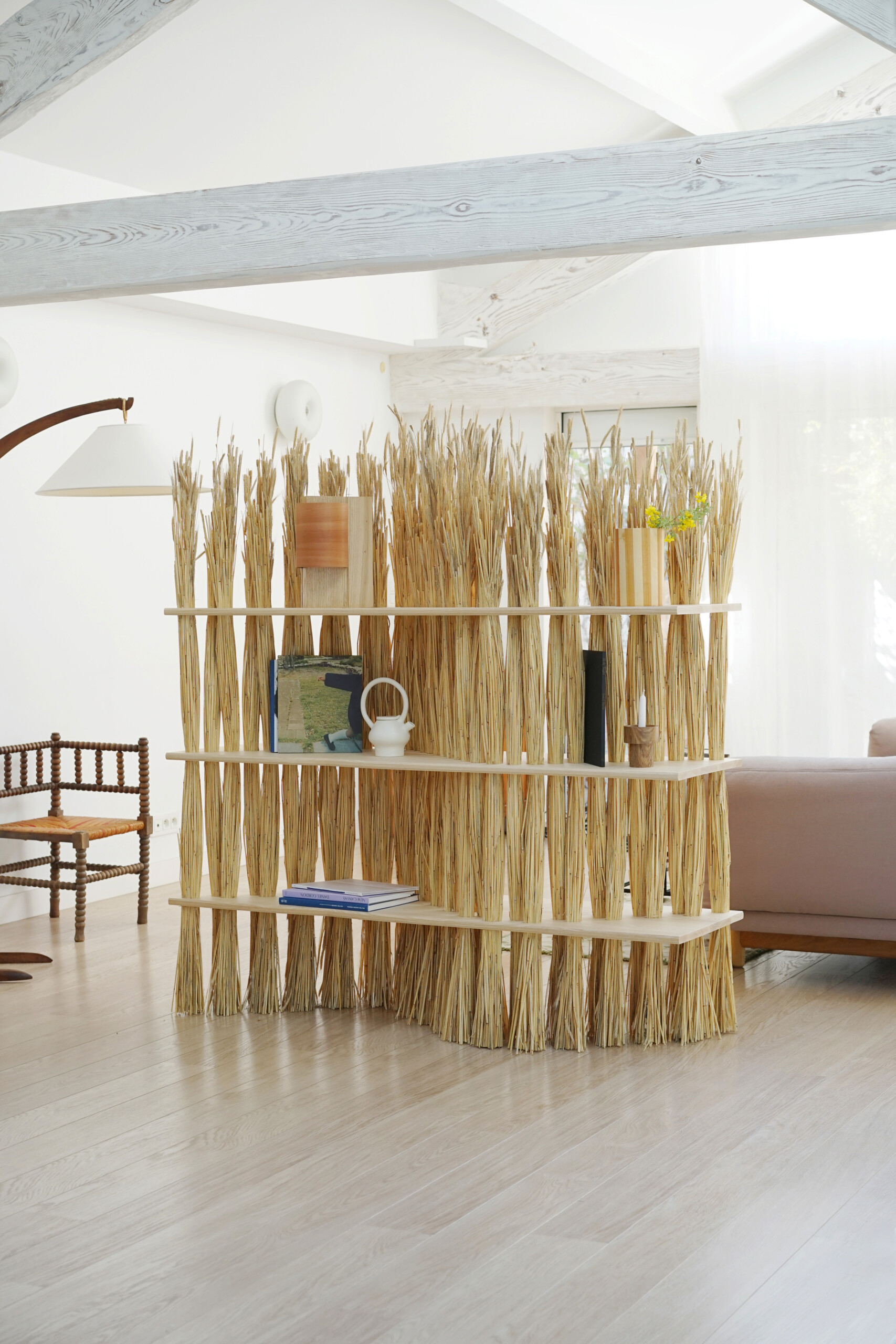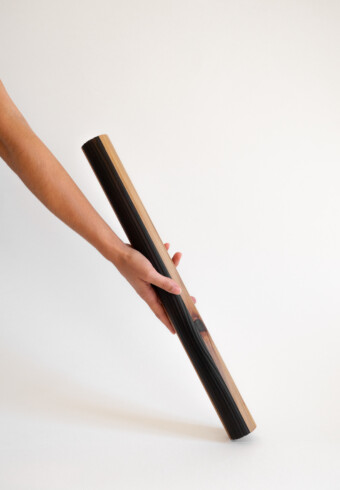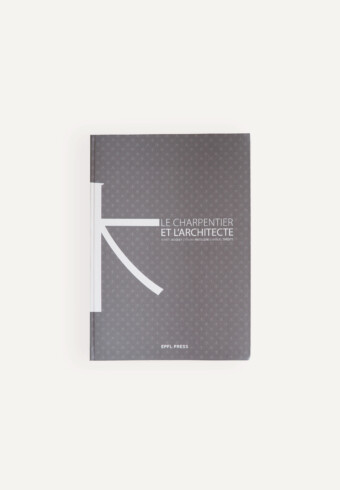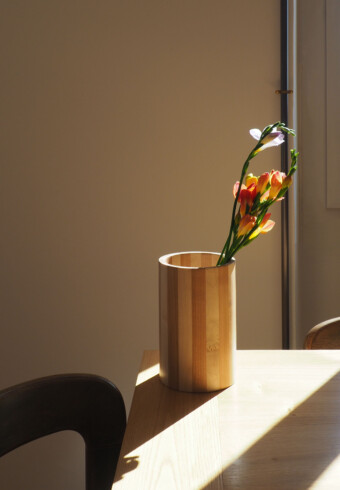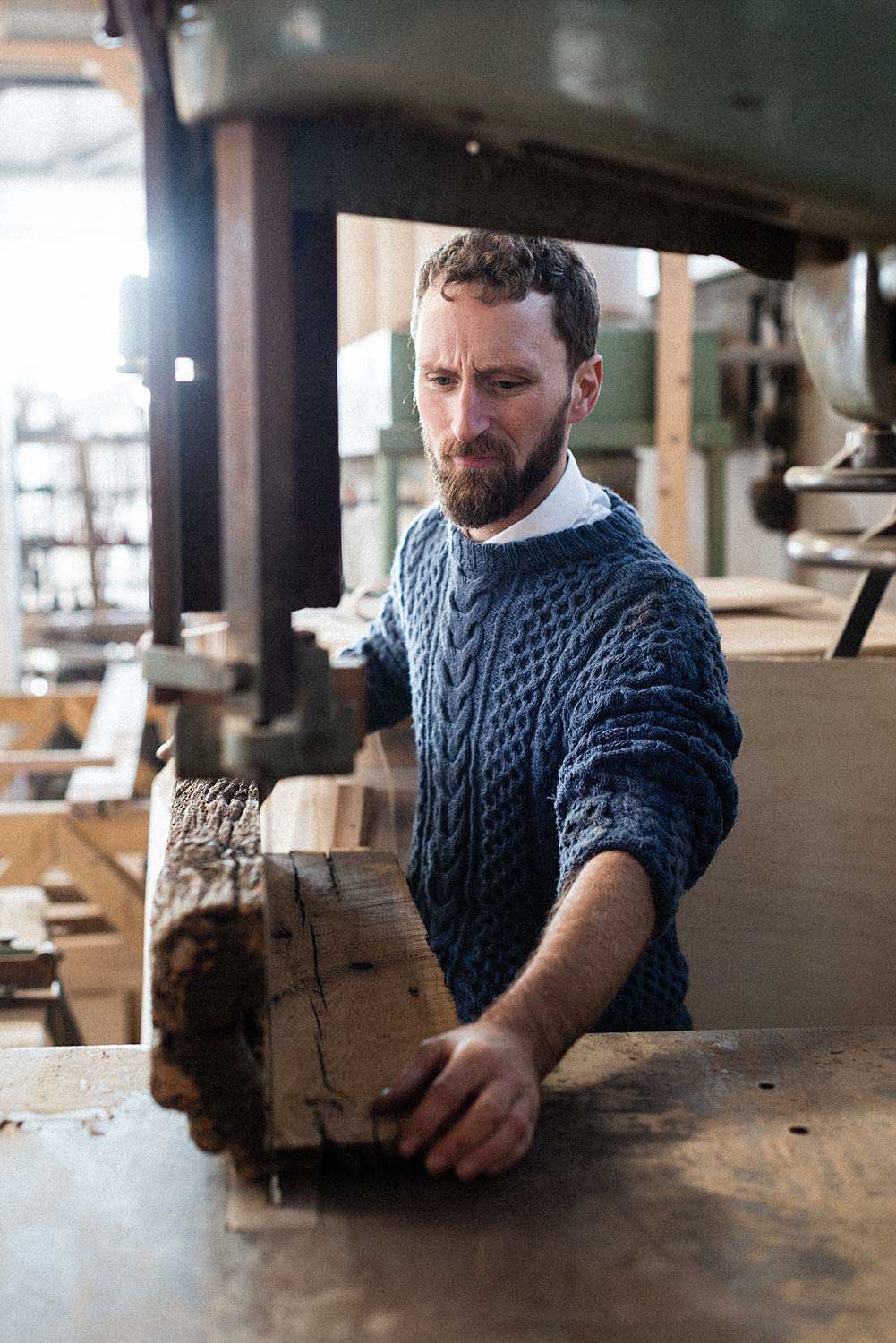
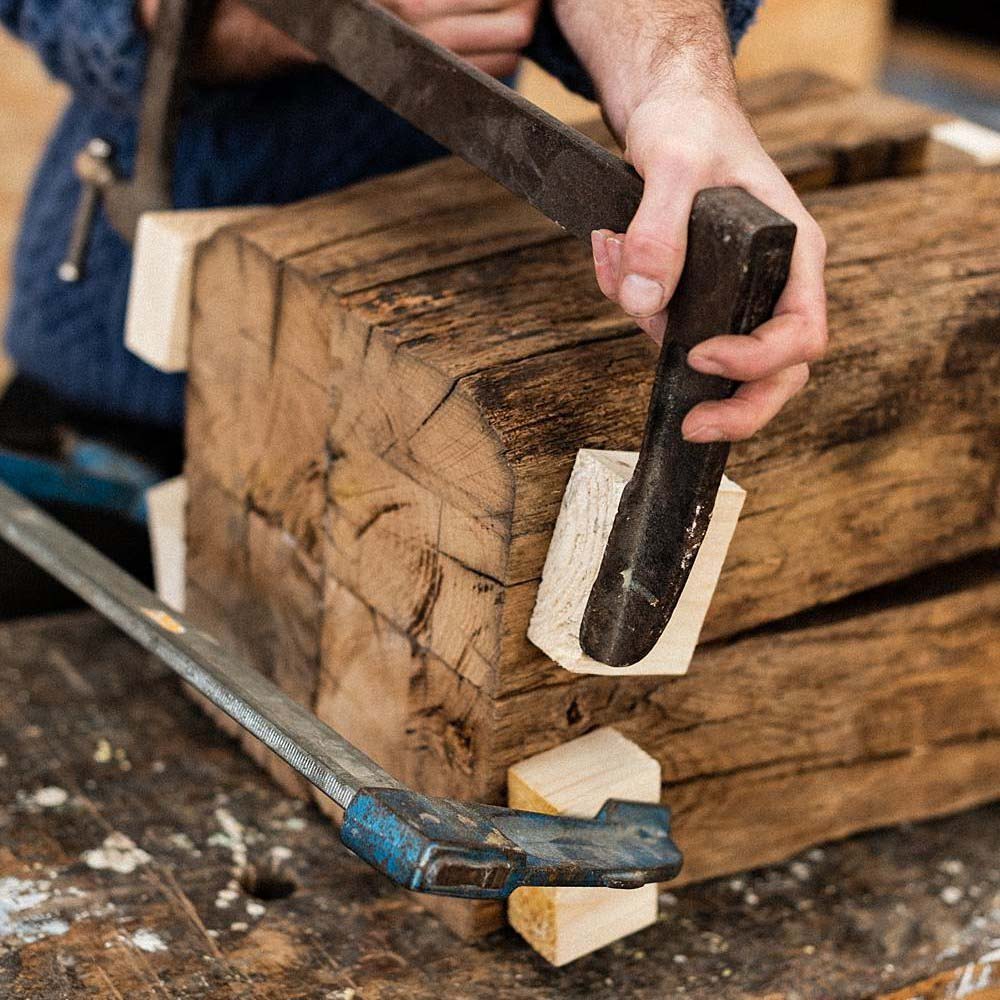
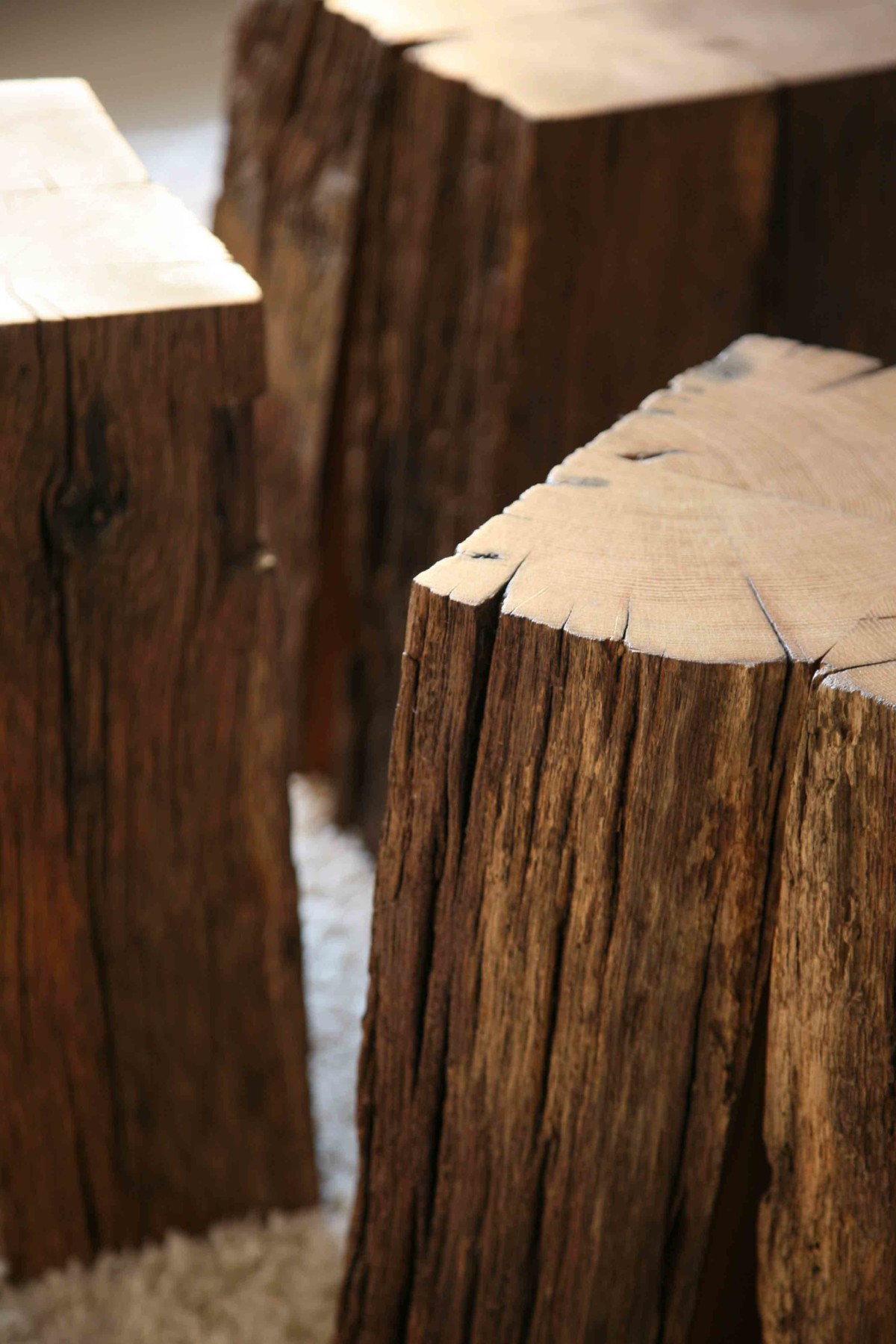
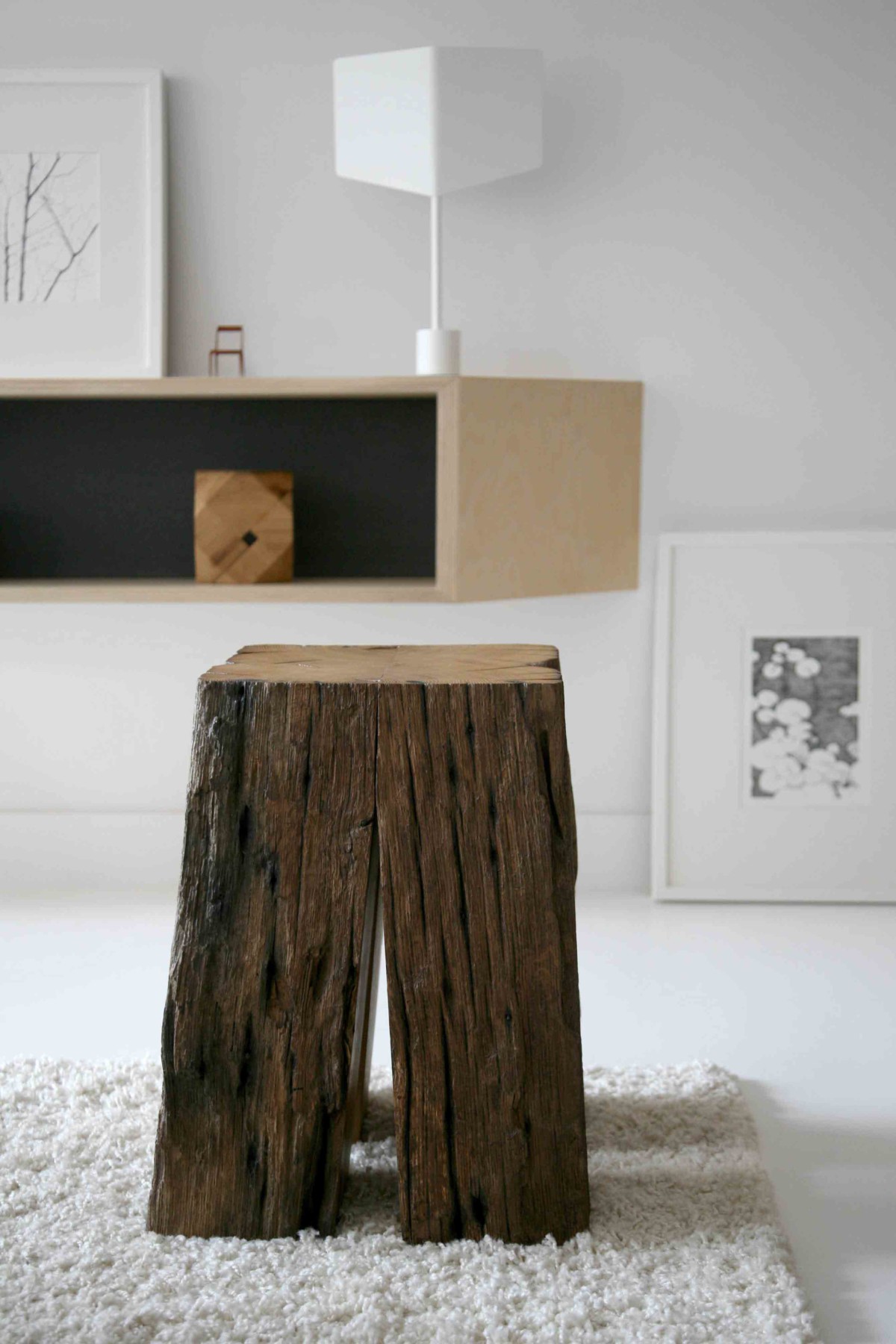
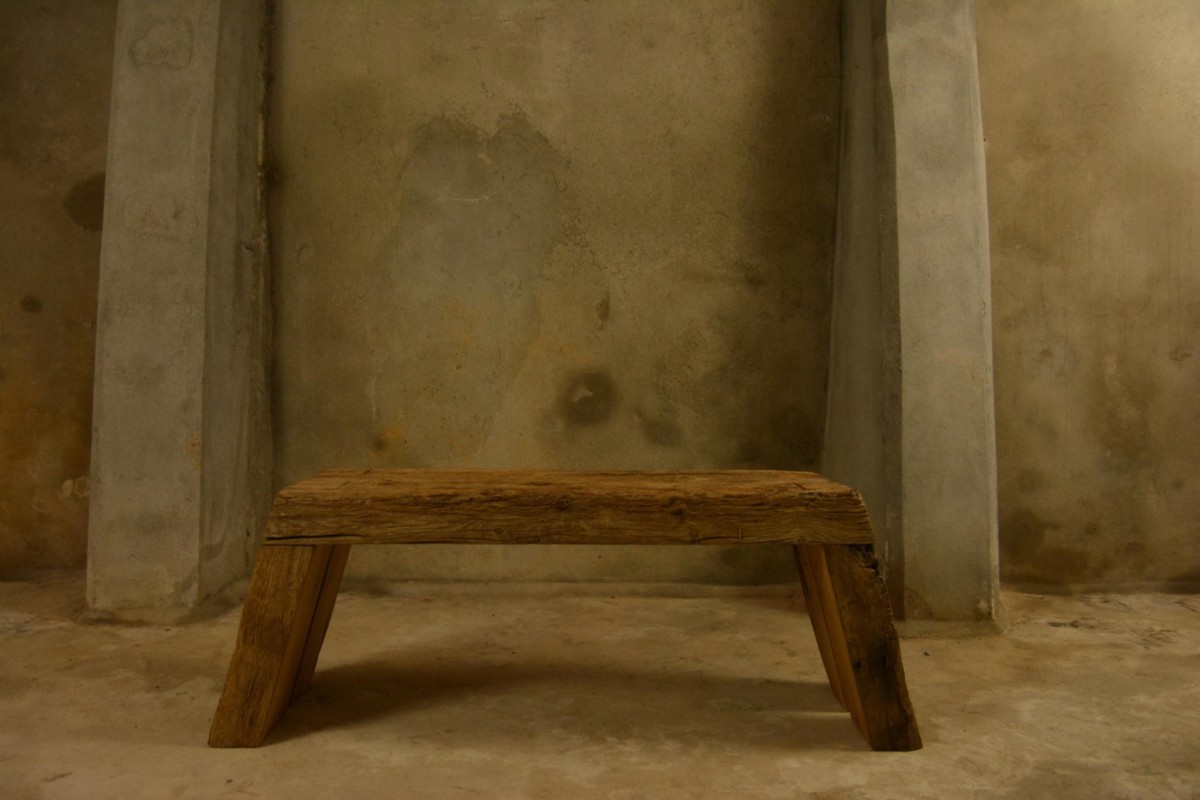
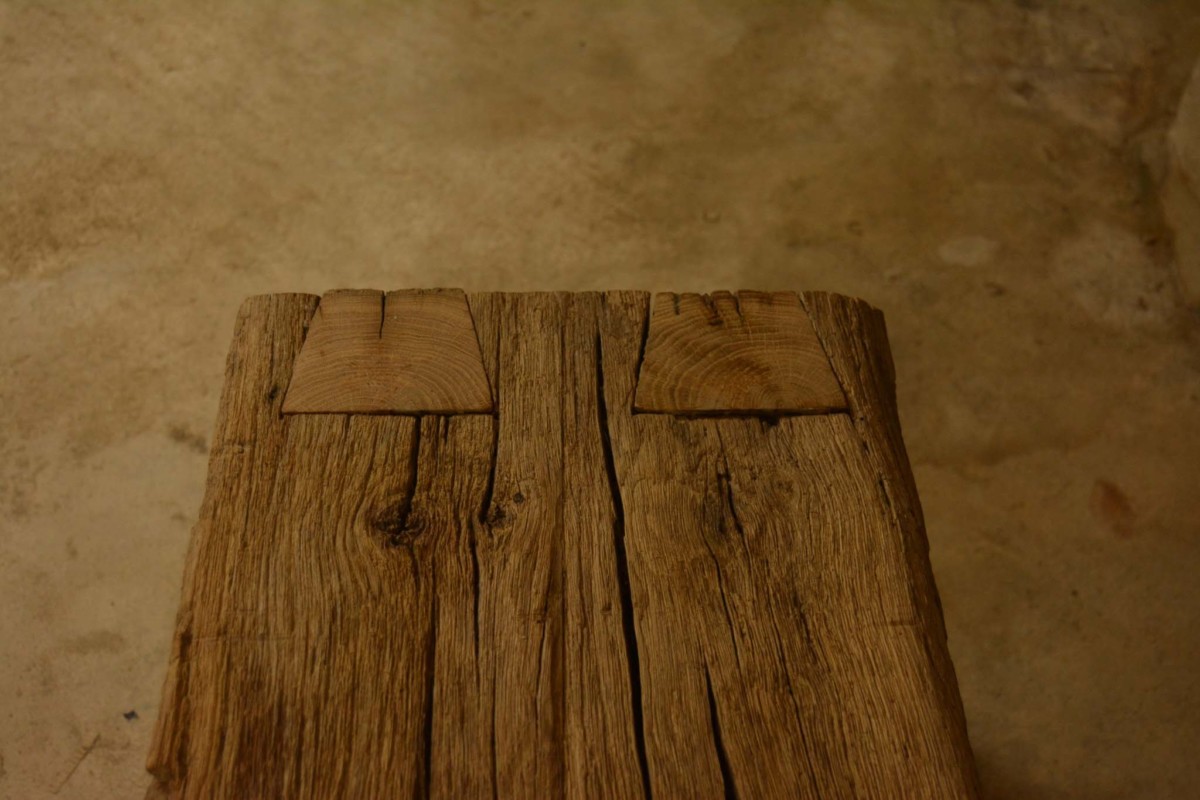
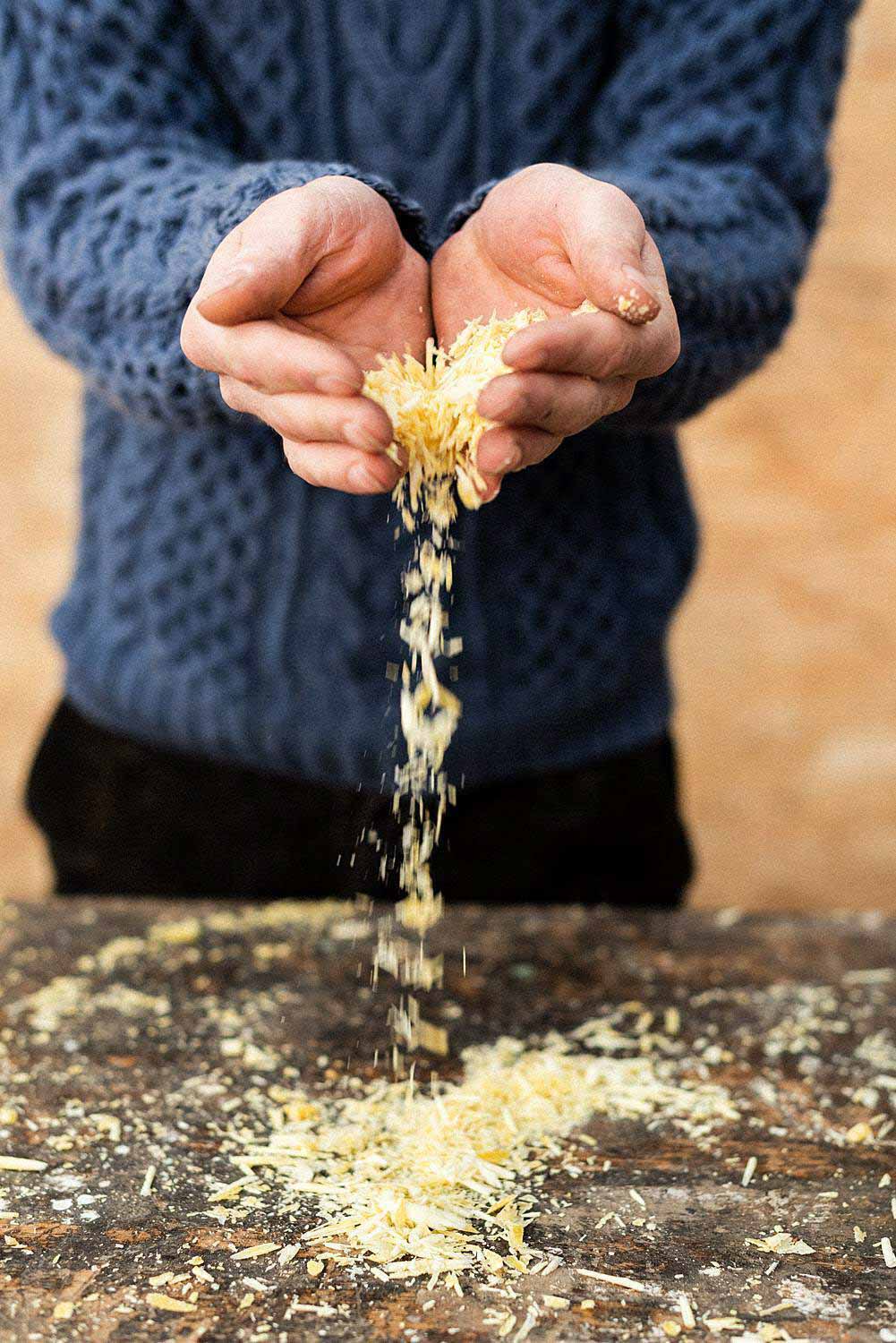
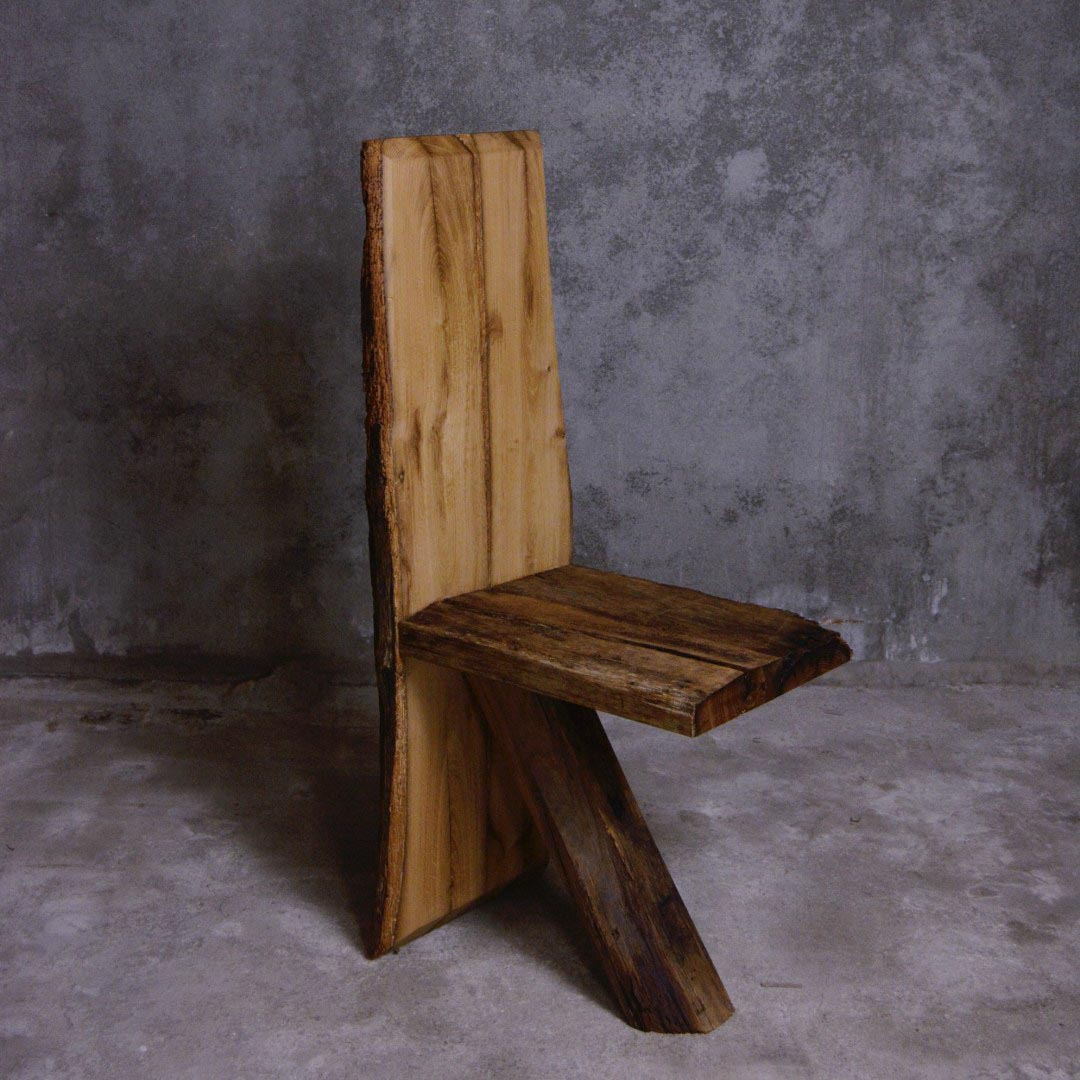
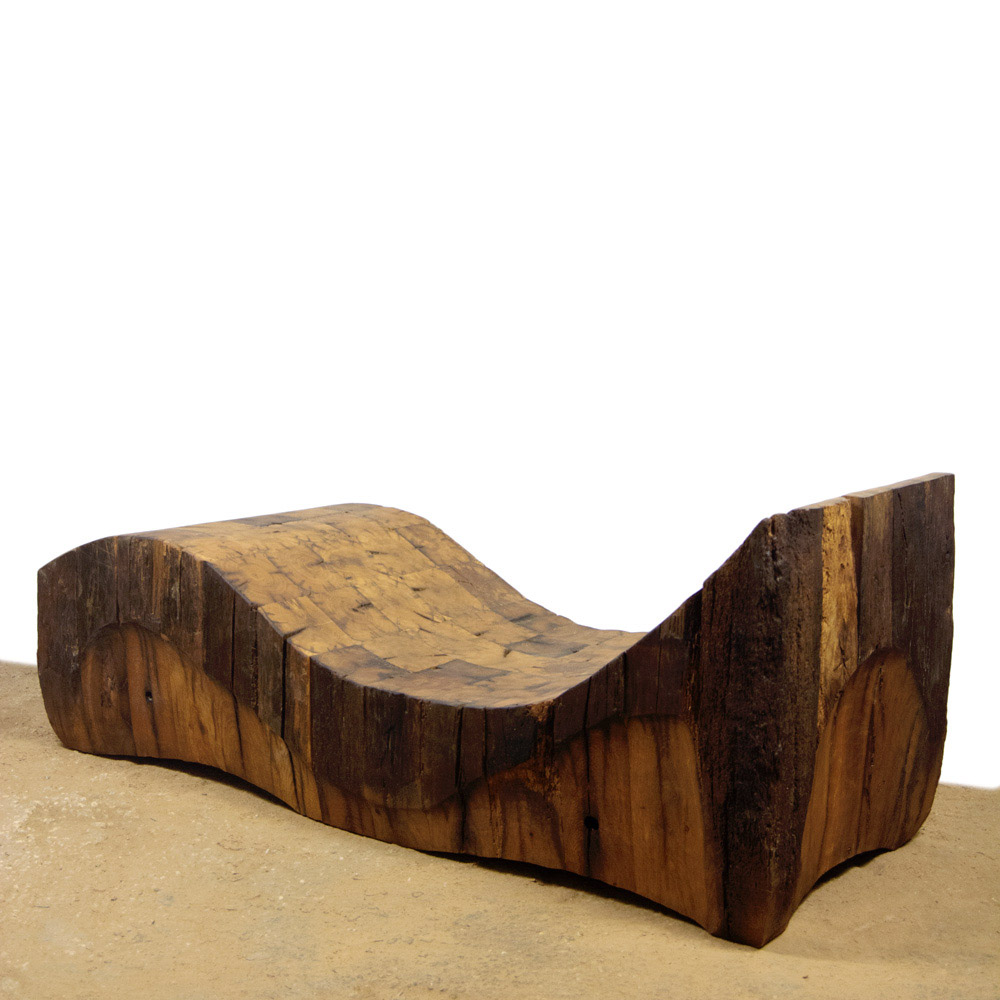
Timothee Musset Musset workshop

Located in Essonne, very close to the forest of Fontainebleau, Timothée is a carpenter by training, designer of furniture by passion. Using old frames to create customary and contemporary pieces, he poetically brings a wood that is too often forgotten.
How Atelier Musset was born?
I am a carpenter by training. I took part in the Tour de France of companionship, which I completed two years ago. I then worked for a design office, in which I did not stay very long. I had worked quite a bit on historical monuments before, and having a real attraction for old wood, I instinctively needed and wanted to return to it. The Paris region is not conducive to this structural work on old monuments, I naturally wanted to create furniture from old frames, while treating them in a contemporary way. The idea is to make old wood speak in a different way from what we are used to seeing, to give it new life.
What species do you use the most in carpentry? In furniture design?
Spruce is the most common species in classical carpentry. I am still very attached to oak because I did my apprenticeship in a small company that produced a lot. I favor local species, I avoid going to look for wood at the other end of France depending on the location of the project. For the furniture made in the Paris region, I try to favor the old wood that we find in IDF - especially oak. In principle, I source the raw material according to my network, my carpenter friends, acquaintances or even individuals on Le Bon Coin.
We can read on your site “In Search of Forgotten Woods”. Do you see in this project a real mission to upgrade these woods?
I see it more as a means of expression through which I can align my own convictions, which is what gives meaning to my work. We live in a world where it is more and more difficult to feel and make things feel. I therefore seek to provide much more than a generic element of comfort at home.
Ancestral know-how takes an important place in your creation process, why is it important for you?
Beyond mixing the different eras, it is above all a desire to link know-how, to implement ancestral assemblies, learned when I was a carpenter but also by reflecting on the different constraints and solutions. It is in particular the constraints which bring the solutions including in particular ancestral know-how. I am completely out of modern technology (CNC, melamine, products from petrochemicals, etc.). For example, I create my own beeswax by going to the beekeeper and making my own mixtures. Beyond the desire to fully control production, it is important for me to be in line with my convictions. Why by mimicry and empiricism have we been able to manufacture new things without calling on so much chemistry and technology? Through this project I want to show that it is still possible to create contemporary pieces with old materials and often forgotten techniques.
Your first stool has a rather minimalist shape, almost inspired by Japanese aesthetics. How would you characterize your collections?
It's quite complicated to define this in one sentence. The next piece that we are going to present with François Bazenant will be very brutalist and architectural, while the stool N ° 1 from the Studio Etat de Grâce is indeed quite minimalist. I want to keep a certain guideline, in particular by the material which will remain unchanged, while having the freedom to be able to venture on other aesthetics.
Do you focus only on furniture or would you like to broaden your scope?
Furniture is in fact currently the heart of my activity. However, I have a few private orders in interior design, for example with the Parisian architecture firm Joly & Loiret, which wishes to reorganize its open space sound with oak tables assembled in a keyway.
Where can we find your creations?
My creations are present in galleries, which seems quite natural to me given that each piece of wood is unique, thus making each piece unique - although the shape is not. They are now present at the Arcanes gallery in Saint-Germain-des-Près, as well as in the Le Sentiment des Choses gallery, specializing in Japanese antiques and located in Le Marais. This gives me a significant opportunity and visibility in the most beautiful areas of Paris.
You often collaborate with designers. What vision do they bring alongside yours?
When Atelier Musset was created, I had no basis in design. I started to take an interest in this environment, to meet people. In particular that of Jean-Michel Tarallo with whom I exhibited the Tabouret N ° 1 at the Forum Bois International in Nancy. I also collaborate with the designer François Bazenant, or with Nicolas Campion, artistic director in advertising who notably helped me to establish my identity. This collaborative aspect nourishes me enormously because of our complementarity. My original work, a carpenter, is very rational, closely related to physics and mathematics. The designer is more multidisciplinary in many aspects, and in particular that of materials. This leads him to draw things that take me outside of my knowing and comfort zone. It is from this moment that it becomes interesting.
Could you tell us more about your future projects?
Of course ! There is in particular the Borges Project, developed with François Bazenant, coming from the desire is to start from a unique form while leaving the choice to the user to multiply it to give it the form that we want. wish. We were inspired by the Argentinian author-writer Jorge Luis Borges and his short story "The Library of Babel" defining that if we mix all the letters of the alphabet we can obtain new words and thus create an unlimited series of books. I will also be present in Biarritz in June, invited to present some of my creations by the “A mano studio” gallery, in particular the “Regard Partagé” bench made from old Normandy oak.
On the occasion of OROS market, Timothée offers us to acquire a unique piece, a small oak bench from an old frame.








- Photographer: Gaetan Jargot, Nicolas Champion, Atelier Musset
- Location: Essonne, France
- Website: https://ateliermusset.com
Share
